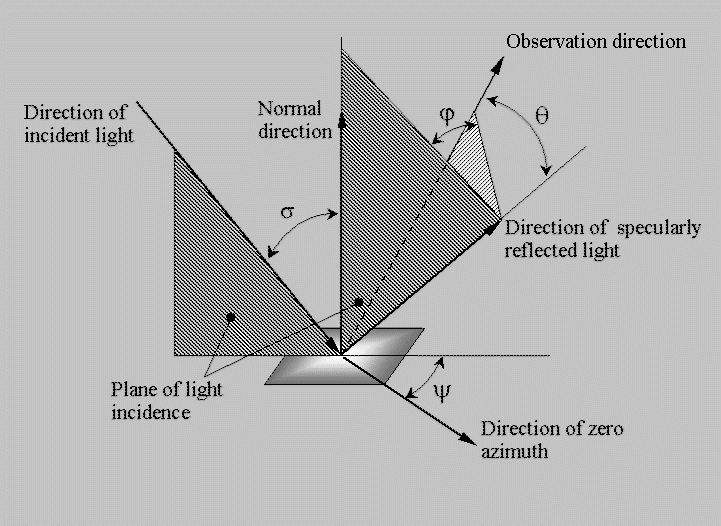  |
BRDF format representation
|

BRDF data is divided in two categories: diffuse and specular, and the
measurement is presented in the form of goniometric diagrams. The diffuse
BRDF is used to describe the light scattered from a surface in various
directions. On the contrary, the specular BRDF describes a mirror-like
light reflection in which reflected/transmitted light propagates only in
one direction. Of course, a given surface can have both diffuse and specular
BRDF attributes (e.g., the blue tile in our case).
The following parameters are taken into account in the BRDF description:
-
Spectral dimension.
-
Incoming ray representation: Psi - the azimuth of incidence and
Sigma
- the incident angle. The Psi angle is counted in the direction of the
counterclockwise rotation around the normal vector.
-
Outgoing ray representation: Theta - the angle between the directions
of specular reflected and observation directions. Phi - the
angle between the incidence plane and the plane coinciding with the observation
and specular reflection directions. The Phi angle is counted in the direction
of the counterclockwise rotation around the specular reflected ray.
The data is presented as a table with values defined in nodes and values
between nodes linearly interpolated. The type of BRDF data color model
can be RGB or spectral; in the later case wavelength (WL) coefficients
define falling illumination transformed according to BRDF.

